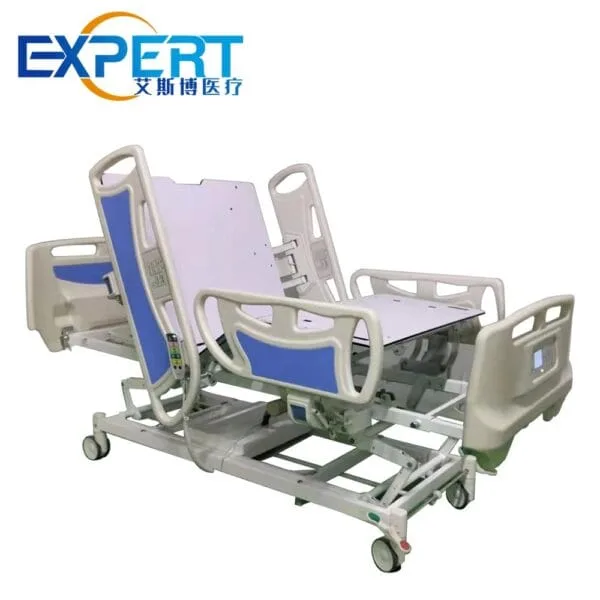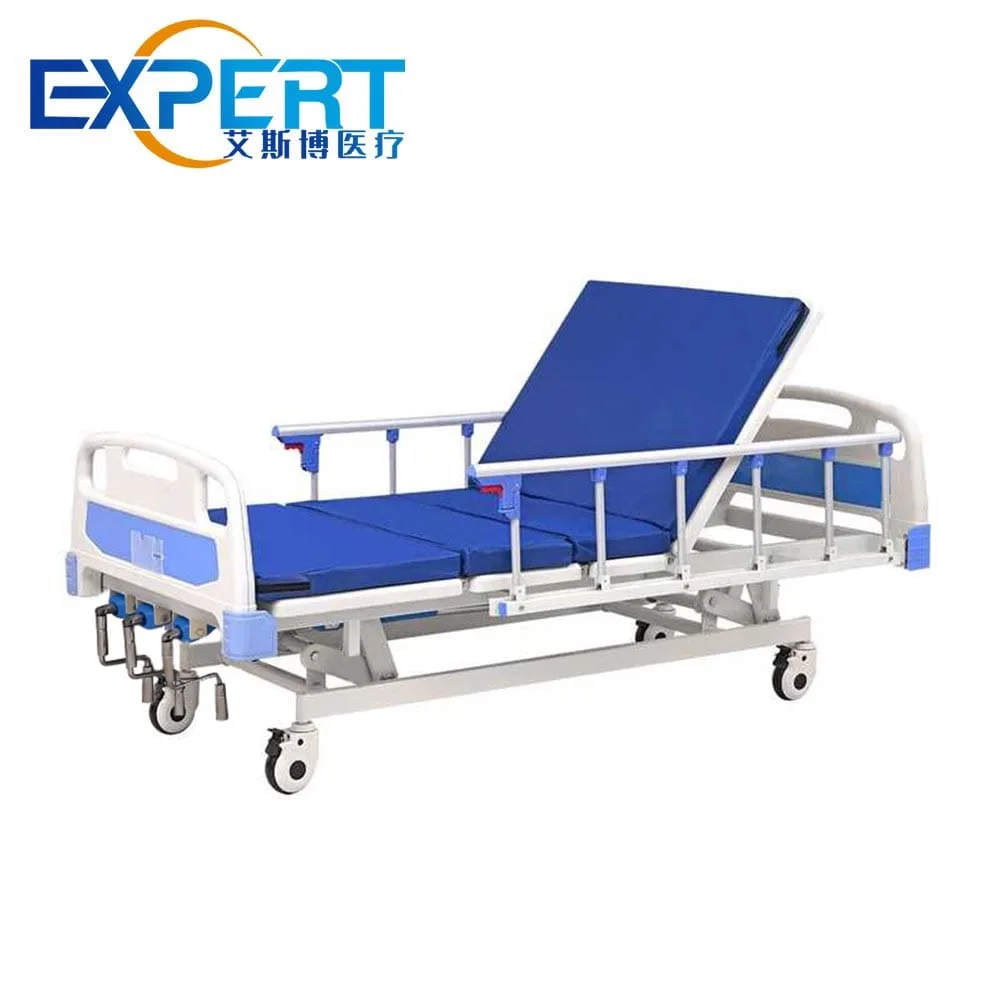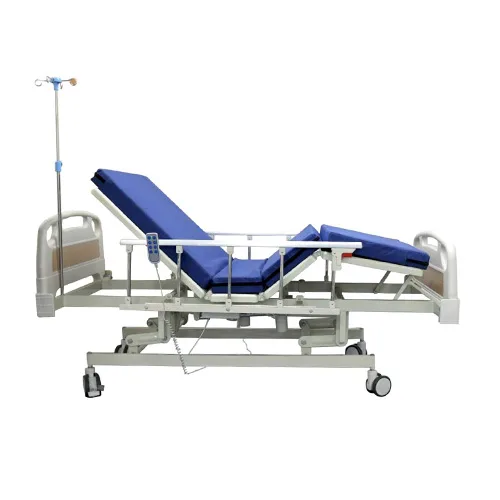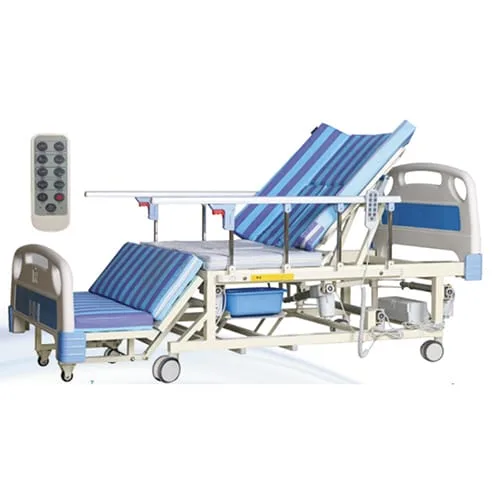Dirección
304 North Cardinal St.
Dorchester Center, MA 02124
Horas laborales
Lunes a viernes: 7:00 a. M. - 7:00 p. M.
Fin de semana: 10 a. M. - 5 p. M.
Dirección
304 North Cardinal St.
Dorchester Center, MA 02124
Horas laborales
Lunes a viernes: 7:00 a. M. - 7:00 p. M.
Fin de semana: 10 a. M. - 5 p. M.

Los tipos adecuados de cama de hospital pueden afectar significativamente la comodidad, la recuperación y el bienestar general del paciente.
¡Bienvenido a mi blog!
Antes de profundizar en el contenido, me encantaría que te unas a mí en mis plataformas de redes sociales, donde comparto más información, interactúo con la comunidad y publico actualizaciones. Puedes conectarte conmigo de la siguiente manera:
Facebook:https://www.facebook.com/profile.php?id=100071234835011
LinkedIn:https://www.linkedin.com/company/74943205/admin/dashboard/
YouTube:www.youtube.com/@shandongexpertmedicalequip4695
TikTok:www.tiktok.com/@expertmedical
Ahora, comencemos nuestro viaje juntos. Espero que el contenido que se incluye aquí te resulte interesante, interesante y valioso.

In the realm of healthcare, the importance of a proper hospital bed cannot be overstated. The right types of hospital bed can significantly impact a patient’s comfort, recovery, and overall well-being. From basic manual beds to advanced electric models, the variety of types of hospital bed available caters to diverse patient needs. Understanding these different types of hospital bed is crucial for healthcare professionals and caregivers alike. This blog post aims to provide a comprehensive overview of the various types of hospital bed, helping you find the perfect fit for your patients.
Manual hospital beds are the most basic types of hospital bed, operated by hand cranks. These beds offer simplicity and reliability, making them a cost-effective option for many healthcare facilities.


Electric hospital beds are a significant advancement in patient care. These types of hospital bed use electric motors to adjust the bed’s position, providing enhanced comfort and convenience for both patients and caregivers.
Semi-electric hospital beds offer a middle ground between manual and full electric beds. Typically, the head and foot adjustments are electric, while the height adjustment is manual.
Beyond the standard manual and electric beds, there are several specialty types of hospital bed designed to address specific patient needs.
Here’s a table summarizing the key features of different types of hospital bed:
| Tipo de cama | Características clave | Ventajas | Desventajas | Ideal para |
|---|---|---|---|---|
| Camas de hospital manuales | Ajustes manuales de la manivela | Cost-effective, reliable | Manual effort required, limited positioning | Patients with minimal mobility needs |
| Camas de hospital eléctricas | Electric adjustments for all positions | Effortless adjustments, enhanced comfort | Higher cost, requires electricity | Patients with significant mobility limitations |
| Camas de hospital semieléctricas | Electric head and foot. manual height | Balance of cost and electric function | Height adjustments require manual effort | Those who want some electric functions, but have a budget. |
| Camas bariátricas | Marco reforzado, mayor capacidad de peso. | Accommodates larger patients, durable | Higher cost, larger size | Bariatric patients |
| Low Air Loss Beds | Air-filled mattress, pressure reduction | Prevents bedsores, improves circulation | Higher cost, requires maintenance | Patients at high risk of skin breakdown |
| Trendelenburg Beds | Tilting positions | Used for specific medical procedures | Not suitable for all patients | Patients requiring specific medical positioning |
| Rotational Therapy Beds | Constant patient rotation | Prevents pulmonary complications and bedsores | Higher cost, complex operation | Patients with severe injuries or illnesses |
| Camas de hospital pediátricas | Smaller size, child safety features | Designed for young patients, safe | Can be expensive | child patients. |
When selecting types of hospital bed, several factors should be considered:
Proper maintenance and care are crucial for ensuring the longevity and functionality of hospital beds. Regular cleaning, inspections, and timely repairs are essential.

Hospital beds play a vital role in patient recovery by providing comfort, support, and facilitating medical treatments. The right bed can significantly impact a patient’s healing process.
Elegir lo correcto tipos de cama de hospital is essential for providing optimal patient care. Understanding the different types of hospital bed and their features can help healthcare professionals and caregivers make informed decisions. From manual to electric and specialty beds, there is a wide range of options available to meet diverse patient needs. Invest in quality and patient comfort today. For any purchase inquires, please Contáctanos.
What is the difference between manual and electric camas de hospital?
Las camas manuales funcionan mediante manivelas, mientras que las camas eléctricas utilizan motores eléctricos para los ajustes.
¿Para qué se utilizan las camas bariátricas?
Las camas bariátricas están diseñadas para pacientes con mayor capacidad de peso.
How do low air loss camas prevent bedsores?
Las camas con baja pérdida de aire utilizan colchones llenos de aire para reducir la presión y mejorar la circulación.